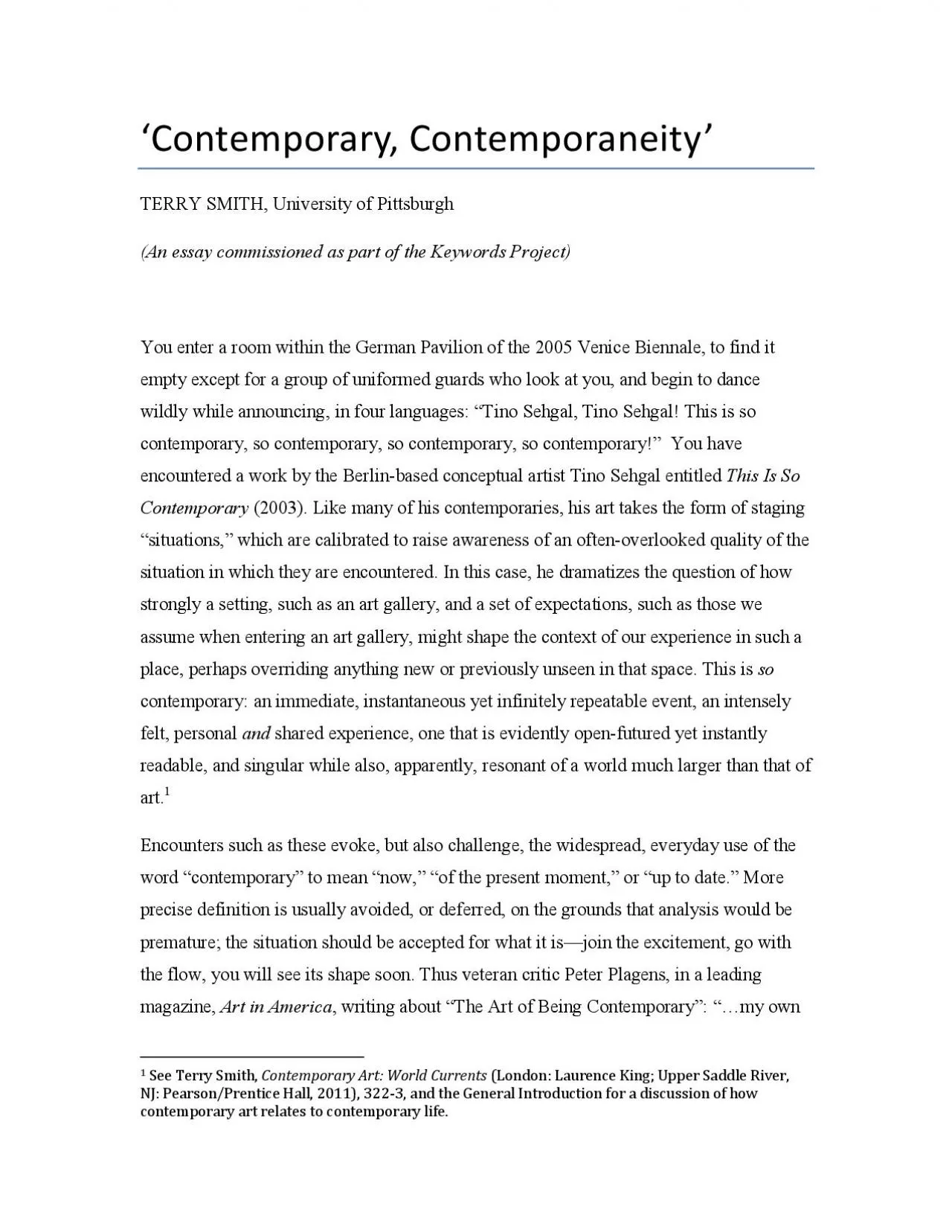PDF-Oontemporary Oontemporaneity
Author : leah | Published Date : 2021-09-23
TERRY SMITH University of PittsburghAn essay commissioned as part ofthe Keywords ProjectYou enter a room within the German Pavilion of the 2005 Venice Biennaleto
Presentation Embed Code
Download Presentation
Download Presentation The PPT/PDF document "Oontemporary Oontemporaneity" is the property of its rightful owner. Permission is granted to download and print the materials on this website for personal, non-commercial use only, and to display it on your personal computer provided you do not modify the materials and that you retain all copyright notices contained in the materials. By downloading content from our website, you accept the terms of this agreement.
Oontemporary Oontemporaneity: Transcript
Download Rules Of Document
"Oontemporary Oontemporaneity"The content belongs to its owner. You may download and print it for personal use, without modification, and keep all copyright notices. By downloading, you agree to these terms.
Related Documents

